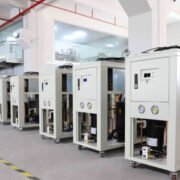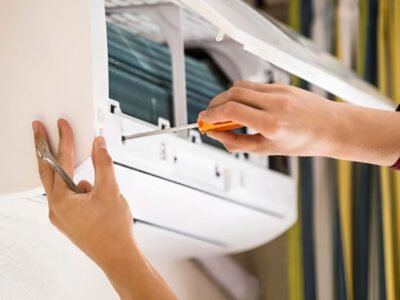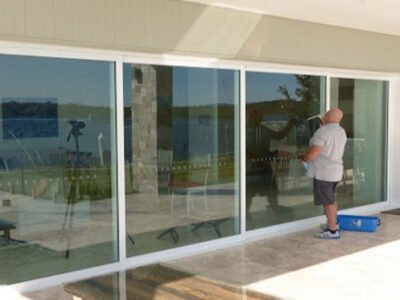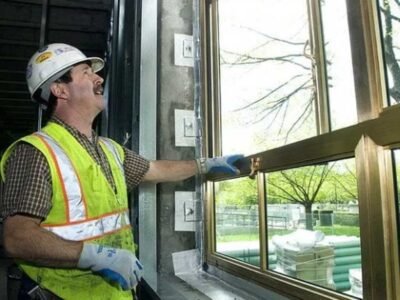Many businesses have one particular room crammed with computers whirring away, tirelessly processing data. It’s the server room, which needs to be within an acceptable temperature range. Just like any machine, servers generate heat when they work. Too much heat can lead to overheating, which can have disastrous consequences. Overheated servers can slow down, crash entirely, or even suffer permanent damage.
But unlike your home office, where a whirring fan might suffice, server rooms require a much more robust cooling system—air conditioning (AC) installation. Why? Keeping your servers cool is crucial for their performance and lifespan.
Here’s where proper AC installation may help. A well-designed AC system ensures your server room maintains a cool and stable environment, keeping your servers happy and humming along smoothly. So, how do you go about installing the right AC system for your server room? This guide will break it down.
Understanding Your Server Room’s Needs
Beyond heat load, the room’s size and layout also play a role in determining air conditioning server room requirements. A larger room naturally requires a more powerful AC unit to maintain consistent cooling throughout. It’s also wise to consider future server expansion when calculating your cooling needs. You don’t want your current AC to struggle as your server fleet grows.
Airflow patterns within the room also deserve your attention. Cool air should circulate evenly to prevent hot spots that could cause overheating. Strategic AC unit placement and airflow management techniques can help achieve this.
AC Unit Selection and Considerations
Now that you understand your server room’s cooling needs, it’s time to find the perfect AC unit – your champion against the heat!
Types of AC Units for Server Rooms
Server rooms typically use two main types of AC units:
- Split Systems: These workhorses consist of two separate units: a condenser unit (located outside the server room) and an air handler unit (situated inside). The condenser expels heat outdoors while the air handler circulates cool air throughout the server room. Split systems offer efficient cooling for larger server rooms.
- Close-coupled Units: These compact units are self-contained, housing both the condenser and evaporator coils within a single casing. Due to their space-saving design, close-coupled units are ideal for smaller server rooms. However, they might have difficulty cooling larger rooms effectively.
Which type is right for you? Split systems are a good choice for larger server rooms or those requiring high cooling capacity. They offer quieter operation as the condenser unit is located outside. However, split systems require more AC installation complexity due to the separate units and ductwork.
Meanwhile, close-coupled units are well-suited for smaller server rooms with limited space. These units are small and easy to install, perfect for tight spaces. However, they can be noisy and might not cool large rooms as effectively as split systems.
Essential Features to Consider
Beyond the type of AC unit, several key features deserve consideration when making your selection:
- Cooling Capacity: Ensure the chosen AC unit boasts a British thermal unit (BTU) rating that meets or exceeds your calculated heat load. Maintaining a cool environment becomes tougher with a weak unit, potentially leading to overheating issues.
- Airflow Rate: Proper air circulation is essential for efficient heat removal. Choose an AC unit with an airflow rate that effectively distributes cool air throughout your server room, preventing hot spots.
- Humidity Control: While some server rooms thrive in drier environments, others require specific humidity levels for optimal equipment performance. Need to control humidity in your server room? Choose an AC unit that can add or remove moisture as needed.
- Redundancy Options: For mission-critical server environments, consider AC units with built-in redundancy features. This could involve having multiple compressor units within the same AC system or even installing two separate AC units. Redundancy ensures continued cooling even if one unit malfunctions, minimizing downtime risk.
Keep these considerations in mind when choosing an HVAC system. Planning these things ahead of time will make the AC installation process smoother.
Planning and Installation
Before the AC installation crew gets there, double-check your electrical wiring. You want to make sure it can handle the new AC unit’s power needs. Upgrading your electrical system might be necessary if your current setup falls short.
Next, think about ductwork placement. The goal is to create a network of ducts that efficiently distribute cool air throughout the server room. An HVAC professional can help design an optimal duct layout based on your room’s configuration.
Finally, a raised access floor can impact airflow. Raised access floors are common in server rooms and provide easy access to cables and equipment underneath. However, the floor panels need to be perforated to allow cool air to reach the servers effectively.
Maintaining Your Server Room AC System
AC installation is only one of many things you have to do. Just like any other piece of equipment, your server room’s HVAC system requires regular maintenance to function optimally and have a long lifespan. Schedule regular cleaning of the air filters to prevent restricted airflow that can impede cooling performance. Dirty filters reduce efficiency and may cause breakdowns by forcing your AC unit to work harder.
Another key maintenance task is cleaning the evaporator and condenser coils. Dust buildup on the coils is like a blanket on your AC. Regular cleaning keeps them transferring heat efficiently, so your server room stays nice and cool.
Maintaining a cool and stable environment in your server room goes beyond just installing an AC unit. Keeping an eye on temperature and humidity is like checking the gauges on your car. It helps you catch problems early before they turn into bigger issues for your server room. Most modern server rooms have built-in monitoring systems that track these critical factors.
Conclusion
Investing in a proper AC installation for your server room reaps significant rewards. But those rewards come when you’re aware of the requirements and considerations mentioned in this guide. When you do, you’ll experience fewer issues, less downtime, and a more efficient IT infrastructure.















Comments